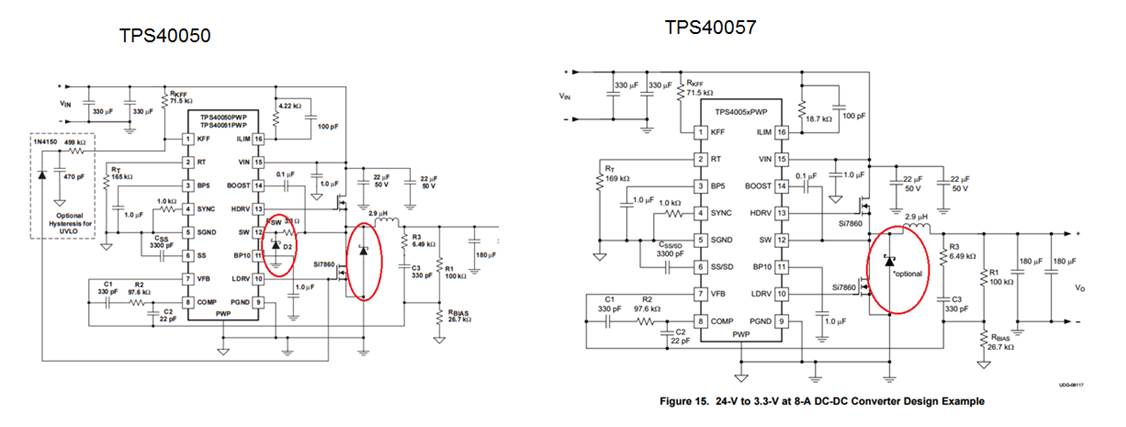Other Parts Discussed in Thread: TPS40050-Q1
Hi all ,
For a design of a 12V to 5V synchronous buck the customer is using the “Tps40057 synchronous buck controller”.
When comparing it to previous controller they were using “Tps40050-q1”.
the see that in both the applications and specs are similar.
1. Why are there differences with regards the diode application? (see below)
2. Do they need to add “D2” to their tps40057 application?


